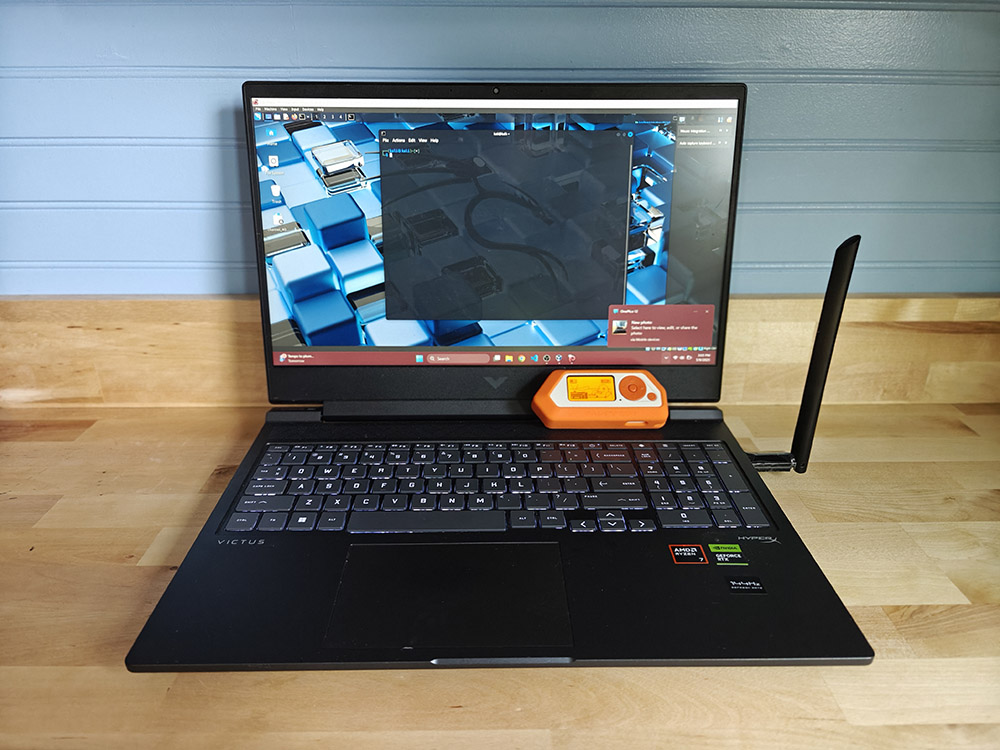Posted on: May 10, 2025
Deauthentication Attack: How a Simple Hack Can Kill Your Camera Feed Without You Ever Knowing – Video Demonstration Below 👇
If you’re relying on wireless cameras to protect your home or business, this post is one you really need to see. I set up a quick demo to show just how easily a Wi-Fi security camera can be taken offline using a Flipper Zero and a script called WiFi Marauder.
This isn’t a stunt or scare tactic – it’s a real test I ran using my own gear on a test network I built specifically for this purpose. The goal is to raise awareness about a serious vulnerability that most people don’t even realize exists.
It builds on what I showed in my Evil Portal post, where I used a Flipper Zero to create a fake public Wi-Fi network and capture login attempts. That was about spoofing. This one is about straight up disruption.
Here’s what happened: I set up a test network called Z_SECURITY_TEST, connected an older wireless camera to it, and launched a deauth attack using WiFi Marauder on the Flipper Zero. Then I walked into the camera’s frame, waved, and triggered the attack.
The feed froze instantly. There I was, mid-wave, frozen like a glitch in the Matrix. The camera didn’t turn off, it just lost its connection and stayed that way. That’s the power of a simple deauthentication attack.
If you’re not familiar, a deauth attack floods the network with fake “disconnect” packets. Some older or low end devices, especially wireless cameras and smart home gear, drop their connection immediately. Newer phones and laptops are better protected, but the fact that your security cameras might still be vulnerable… that’s the problem.
So what can you do about it? Here’s what I recommend:
- Use wired security cameras when possible. Ethernet connected cameras don’t rely on Wi-Fi, so they’re immune to this kind of attack.
- Use local storage so even if your camera loses connection, it still records footage to a memory card or hard drive.
- Enable camera downtime alerts. Some systems can notify you if a device suddenly goes offline. Make sure that feature is turned on.
- Do your research. Look into your camera’s specs and known vulnerabilities before buying. If it’s cheap and old, it’s probably easy to knock offline.
As with the Evil Portal demo, this tool isn’t evil by itself. It really all depends on how it’s used. I’m using it to show you guys just how easy it is for someone with bad intentions to mess with your setup.
Knowledge is power. If you know your vulnerabilities, you can fix them before someone else finds them first.
If this post got you thinking about your own security setup, then it did its job. The goal isn’t fear – it’s awareness, because when it comes to security, what you don’t know really can hurt you.
Thanks for taking the time to check out this post. If you haven’t seen the Evil Portal demo yet, give it a look here. Stay safe out there, and stay ahead of the curve.


Leave a Reply
You must be logged in to post a comment.